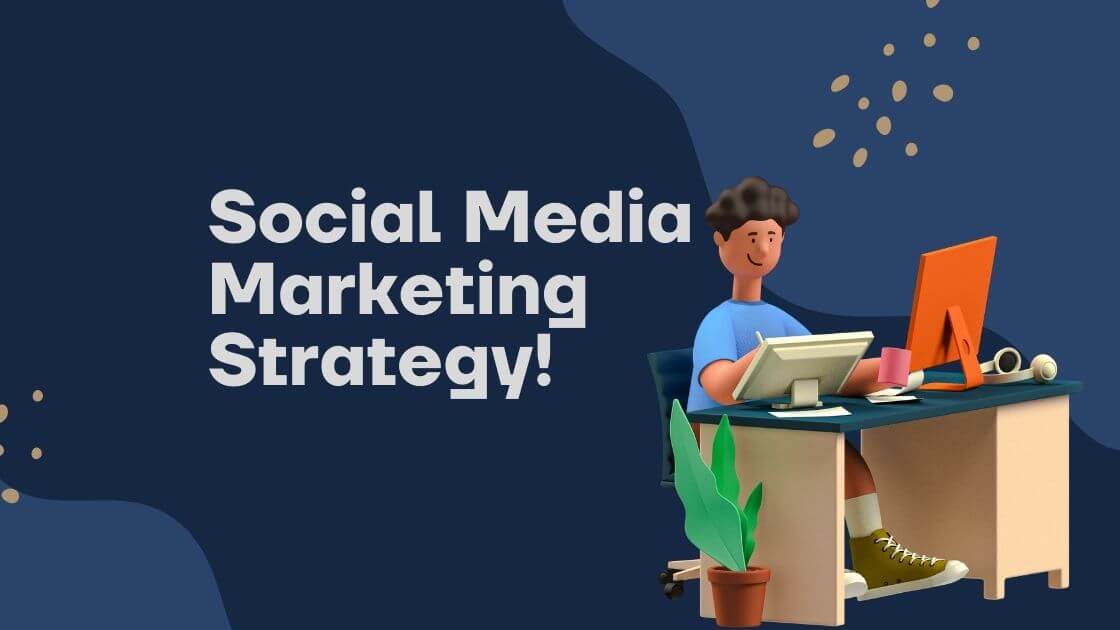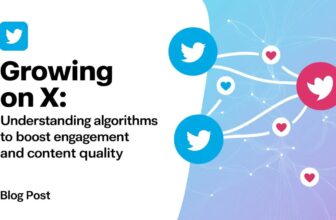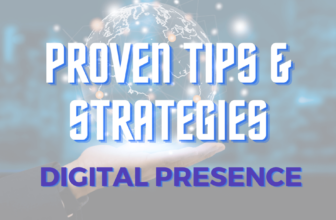
A social media marketing strategy is a synopsis of everything you want to do and hope to accomplish on social media. It guides your actions and tells you if you’re succeeding or failing. Developing a social media marketing strategy is vital, whether you want to expand your company through social media or advance as a social media marketer. You may be published on social media sites for posting if you don’t have a strategy.
It will be challenging to accomplish results on social media until you understand your goals, who your target audience is, and what they want. We’ll show you how to develop a winning social media marketing approach in this piece. Also, keep in mind that a social media posts scheduler will go a long way in ensuring strategy success.
An overview of social media marketing
Social media marketing is the selling or promoting a brand, product, or service through social media networks. Social media marketing benefits businesses in the following ways:
- Boost brand awareness.
- It creates active communities.
- Sell your goods and services.
- Brand sentiment should be measured.
- Offer social customer service.
- Promote products and services to specific audiences.
- As needed, monitor performance and make adjustments to more significant marketing initiatives.
How can social media marketing benefit you?
Social media impacts practically every part of our everyday lives, including business, politics, breaking news, etc. As a result, activity is higher than ever before, and brands are nearly uniformly using it to engage with customers across the customer lifecycle. As a result, brands’ social media presence is no longer discretionary; it is now required.
Through social media marketing, marketers may engage with fans, customers, prospects, and partners more efficiently, effectively, and cost-effectively. According to Pew Research, more than 76 percent of adults in the United States use social media platforms. Therefore, brands must be where their customers are on social media.
Brands must be where their customers are, which is on social media. Marketers may identify their brand’s most delicate social networks and efficiently distribute relevant, quantifiable content across channels with a planned strategy and the correct tools. A great social media strategy guides buyers further along the customer lifecycle, resulting in more revenue.
How to create a social media marketing strategy?
It’s worth noting that there are many similarities between a social media marketing strategy and a social media marketing plan. You can think of it like this: You’re on the right track with a system, and you’ll get there if you have a plan. One of the most straightforward approaches to developing your social media marketing strategy is to ask yourself the 5Ws:
- What motivates you to use social media?
- What are you going to reveal?
- Where are you going to share your thoughts?
- When are you going to tell us?
Although social media is continually evolving, most of the fundamental actions you need to thrive remain constant. Essentially, you’re following the same procedures you’d do to develop a marketing strategy and narrow your focus. So let’s go over these procedures in further depth to start using them in your company.
Step 1: Conduct research on your buyer personas and target audience.
The first stage in developing a social media marketing plan is identifying your buyer personas and audience so that you can target their requirements and interests accordingly through mobile app development.
Consider who you aim to reach, why, and how you categorize them as a group. You’ll be able to evaluate what content will attract the type of followers and consumers you want by considering your buyer profiles and audience. In addition, learn how to develop compelling content to keep your audience engaged.
Step 2: Decide which social media channels you’ll use for marketing.
As an online entertainment advertiser, you should pick which stages to utilize to convey your message. But, unfortunately, there isn’t a set-in-stone solution to which your business ought to operate social channels – it’s more about your ideal interest group’s needs and where they invest their energy.
Step 3: Set your most essential KPIs and metrics.
Your social media approach should be information-driven, no matter your objectives or industry. This implies zeroing in on the most fundamental online entertainment measurements. Rather than zeroing in on vanity measurements, investigate information connected to your goals.
Step 4: Get to know your competition.
A cutthroat examination can assist you with sorting out who your rivals are and what they succeed at (and not all that well). As a result, you’ll have a superior understanding of your organization’s expectations, assisting you in making your virtual entertainment targets.
It will also assist you with perceiving open doors. For example, one of your rivals might be strong on Facebook but not so much on Twitter or Instagram. You could select to zero in your endeavors on networks where your objective populace is underserved instead of attracting devotees from a prevailing player.
Step 5: Make a content calendar for social media.
Of course, sharing quality material is critical, but it’s also crucial to have a plan in place for when you’ll distribute information to achieve the most impact. Your social media content calendar should also include time spent interacting with the audience.
If you want to go further with Instagram marketing automation, you can also try and build a chatbot for Instagram. Platforms like SendPulse can help you create a chatbot of your own for free, with no coding.
Make a posting schedule.
Using social media management tools is one of the simplest ways to ensure your content is distributed as planned. These tools can be used to compose captions, prepare photographs and videos, and schedule postings ahead of time. They also regularly share your content and keep track of all past conversations and engagements. A social media scheduling tool saves you time and frees you to focus on other tasks.
Pro tip: RecurPost lets you plan your entire content schedule and obtain optimal times to post on each network based on your previous engagement rate, impressions, or link click data. RecurPost enables its users to spend as little time as possible on the identical tasks that previously filled the majority of their days.
The platform joined the business with the express intention of making social media simple for users. The best aspect of using our social media scheduler is that you will save both time and money.
You can schedule tweets, Instagram posts, GBP posts, LinkedIn posts, pins, and much more from a single platform. By analyzing previous posts and allowing you to auto-schedule for specific times. There is also the option of bulk scheduling, which will enable you to have multiple posts ready to go simultaneously.
Step 6: Create compelling content
Remember those mission statements you developed in Step 5 for each channel? Now it’s time to delve a little deeper, i.e., present some examples of the type of content you’ll post on each network to meet your mission.
If you’re stuck on ideas for social media content, here’s a comprehensive list to get you started. The concept here is to:
- Maintain content that is relevant to the objective of each network.
- Show other stakeholders (if applicable) what type of material to expect on each network.
This last tip can save you from embarrassment if your employees wonder why you haven’t shared their case study, whitepaper, or blog piece on TikTok.
For example, if you’ve identified Twitter as your primary channel for customer service, you wouldn’t want to waste time uploading brand awareness films there. Likewise, you wouldn’t like to send very polished corporate video commercials to TikTok, where people expect to see short, unpolished videos. This leads us to examine your social media marketing impact and results.
How to Evaluate the Impact and Results of Your Social Media Marketing?
The crucial component of social media marketing is ensuring that your efforts successfully assist you in accomplishing your objectives. To figure this out, you’ll need to keep track of your posts across all channels, and this can be achieved by reviewing and managing your social media metrics.
Metrics for Social Media
Social media metrics are data about the success of your postings and the influence you have on your audience and customers across numerous platforms. These analytics could include information about your degree of engagement, likes, followers, shares, and other activities on each site. Here are some of the most important metrics to keep an eye on:
- Likes, clicks, comments, and reactions to your social media posts are examples of engagement. Other platform-specific sorts of attention include “Saved” Instagram posts and “Pinned” Pinterest posts.
- Reach is defined as the number of individuals who have seen and/or material related to your page or profile.
- The number of views a video receives on Facebook, Snapchat, Instagram, or any other social channel with video capability.
- The number of profile visits is the number of people who have opened your social media page.
- The number of times audience members have cited your profile in their posts.
- Tagging occurs when someone adds the name of your company’s profile or a hashtag to another post.
- When a member of your audience shares a piece of your material on their profile, this is referred to as a “repost.”
- Shares are posts your fans and viewers take from your profile and share with their networks.
By employing the same strategies used to generate leads and drive conversions, you can influence all of these metrics, expand your social following, and improve overall engagement on your profile. Of course, the metrics you pay attention to will vary depending on the season. Here’s the recipe:
- Concentrate on growing your following and raising your exposure if you’re starting. Reach, impressions, and audience growth are the most important KPIs.
- If you’re already established, concentrate on retaining and cultivating your customers. Likes saved, comments, and direct messages are essential stats.
- Focus on selling if you’re introducing something. DMs and clickthrough rates are essential stats.
How to Measure Social Media Metrics?
You can evaluate social media stats in various ways, including using the analytics tools integrated into the sites you use. Here are a couple of such examples:
- Analytics on Twitter
- Facebook Insights
- Instagram Analytics
You might also use an analytics and tracking program like Google Analytics, and this is a beautiful alternative if you want to track your social media and website stats. Finally, as previously discussed, many social media scheduling solutions include monitoring and tracking functions by default. These metrics tracking tools can help you learn what your followers and audience respond well to and what you should consider changing to boost engagement.
Conclusion
Social media has evolved into one of the essential parts of digital marketing. We live and breathe social media in today’s digital environment, and people consume innumerable hours keeping up with the latest news and current trends. For marketers, the online world of social media presents an increasingly compelling space to connect with and sell their products. However, this landscape presents new challenges and opportunities and needs to be integrated with the more traditional elements of brand strategies—including printed packaging boxes.
For Marketer
Developing a great social media strategy will help your company expand, no matter how big or little it is. Use all of the tools and resources available to you to create and share content that tells your brand’s narrative. Set goals and objectives, refine your strategy, and keep looking for new ways to engage your audience.






